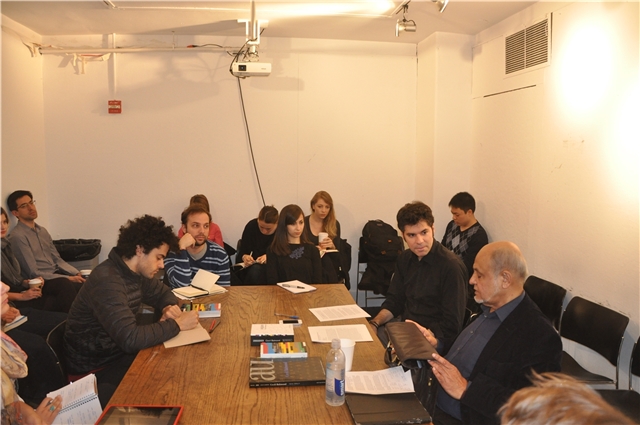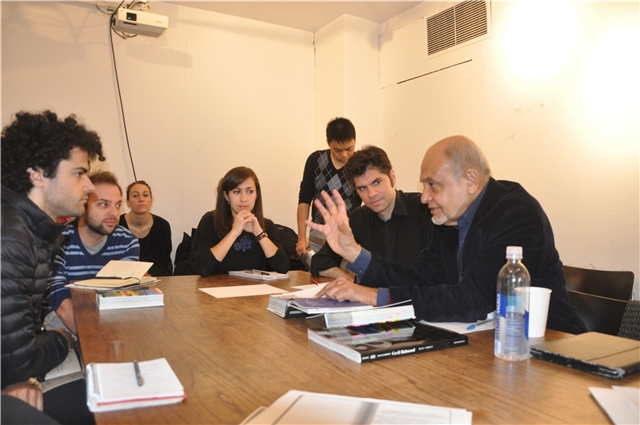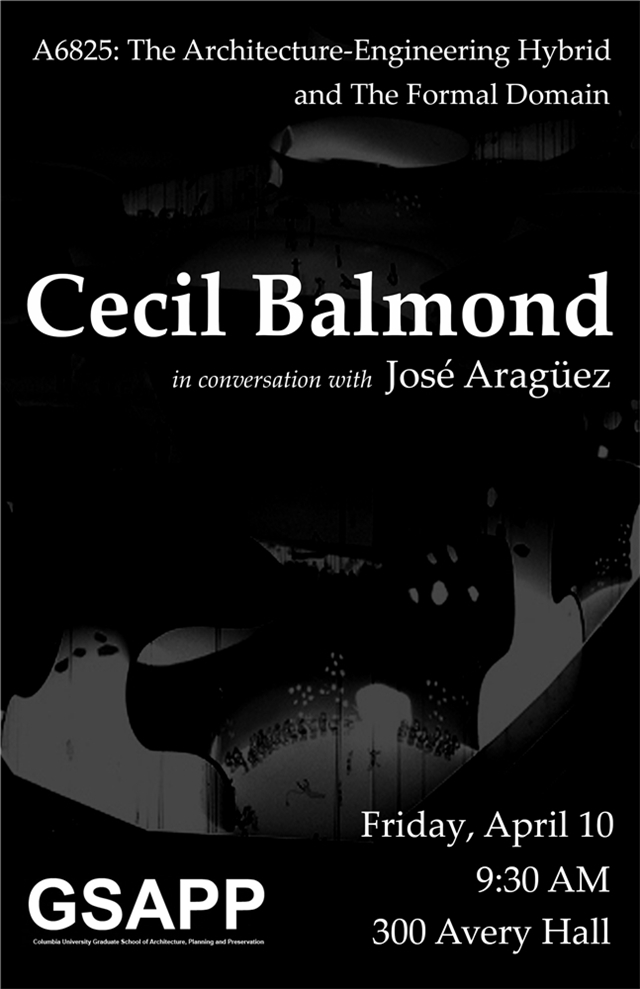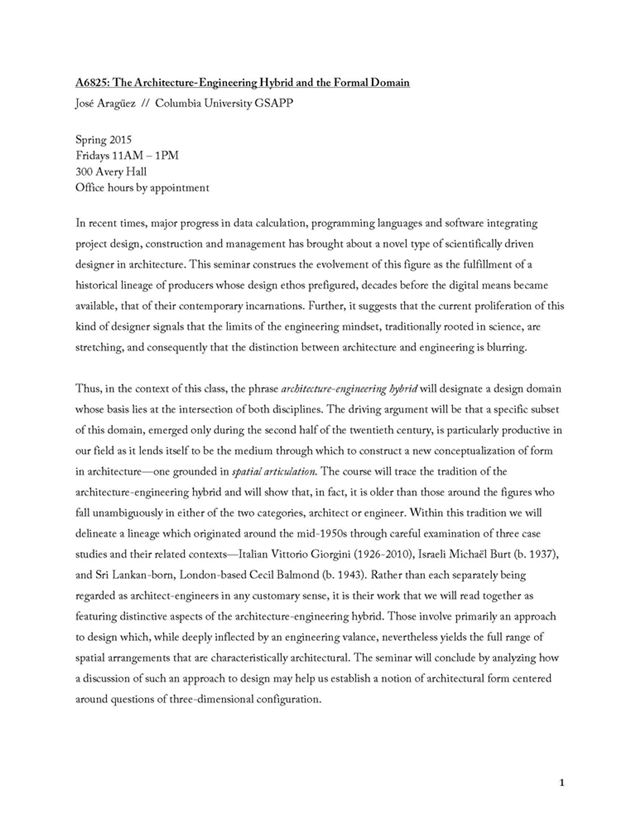- 1. We are going to start with the basics—can you tell us a bit about the difference between linearity and non-linearity, and how that distinction in turn bears on that between formal and informal?
2. At the core of your work is a rapport between coherence, consistency, logic and so forth, on the one hand, and other aspects which are typically taken to run counter to those, that is, opportunism, instinct, seizing the immediate, etc. Now, it is not an anything goes, and in fact you often invoke the term “integrity” as something you are after. So two questions here:
- How do you define such integrity?
- And what is it about the particular way in which you handle the negotiation between these two sets of attributes that makes your approach to design rest distinctly on solid ground?
3. You claim that the informal is not about ad-hocism, which is collage. However, when defining one of the three characteristics of the informal, juxtaposition, you write that it refers to “two actions clashing and influencing each other to give a new entity by virtue of adjacency.” How is this adjacency different from ad-hocism — one could interpret those as very close terms?
4. What is the difference between “deep structure” (a term with a metaphysical import) and “organization” (a term without it)? Actually you use structure in at least three different senses—“load-bearing,” “new,” and “deep”…
5. We’ve been talking a lot about topology in class, a term which has been widely misunderstood in architecture. How is topology in your view relevant or not relevant for the conception and design of structures?
6. In one of your writings, you point out that, in a mathematical sense, “chaos is deterministic algorithm”? Can you elaborate on that definition?
7. What is the difference between “spacing out the gap” and “compiling the interval” (Crossover)?
8. Complexity in Ruelle’s view has to do with a construct or a process embodying a certain density of information which is not readily graspable. What do you mean when you say that “complexity in the informal is irreducible”?
9. Can you talk a little bit about the nature of your collaborations with James Stirling, Rem Koolhaas and with Toyo Ito, in both personal and professional terms?
10. The link with the organic world — Ito talking about you said that “architecture conceived according to 20th-century geometry tried to make itself independent from nature in the clearest possible way. But I think what Cecil is saying now is that we should try once again to approach architecture in the same way as the system of nature. […] He goes so far as to wonder whether the way plants and animals grow can be considered geometry.” This would place you in the tradition of the biological structuralism of Goethe or D’Arcy Thompson, and indeed your favoring an in-to-out approach to form resonates with the way Jacques Monod describes the formation of living beings, that is, as the result of “morphogenetic interactions within the entity itself,” as opposed to them being the result of the application of external forces. Do you agree with all of this? The reason I ask is because one doesn’t find that many references to the natural world in your writings, and so I wonder whether on some level you try to avoid the association with “the organic” (this link, when misinterpreted, is the source of many architectures you don’t like).
11. Sticking with Ito for this one too—he paraphrases you when claiming that “we are less free when we try to imagine or produce randomness on our own, than when we use an approach based on algorithms.” Two questions about this:
- Do you agree with him that this point of view makes you “more of a philosopher than a specialist in structures”?
- What is it about, on a more metaphysical level, about algorithms that allows us to achieve unexpected freedom in a way drawing lines at random doesn’t? Is it just about computing power or is there actually a connection between algorithmic rule and freedom?
12. I think it’s fair to say that your work has an artistic side to it, both in terms of design process and literally because you produce artworks. Yet in 2005 you claimed that “architecture should discard the aura of an artistic realm.” How do you reconcile these two questions?
13. Concerning aesthetics, you claim that beauty for you doesn’t lie in the object but in the process, that is, you favor a kind of processual beauty which indeed enables a certain depth in the conception of structures. Now, the issue when people interpret this inclination wrong is what we see happening in a large sector of digital design today, namely, a sort of fetishization of process, that is, lots of effort and intensity put into extremely sophisticated design processes which nonetheless yield uninteresting results from an architectural point of view—or outcomes that are not architectural to begin with. So the question here is how do you develop a value system to make a judgment on the outcome such that you ensure its architectural value, regardless of that of the process?
14. You have written that “a form is not only a building but also a master plan, structure or sculpture, any organization that interrogates space in a new way.” In general, this is the way algorithmic design operates when generating form—prior to scale and program. Now, some people say that, precisely because of that, the impact of algorithmic design techniques on the principles of organization of buildings has been relatively low. Rather their applications are found primarily within the purview of surfaces, pavilions, furniture, graphic design, etc. Do you agree with this diagnosis? If so, how do we design the algorithm itself so that the outcomes are realistically applicable to the organizational properties of form at the building scale—because of its proportions, capacity to house a program, etc.? (in this sense Taichung might be suggesting a productive direction…)
15. I am fascinated by this idea of quasi-periodicity, which is the defining feature of quasi-crystals. Now, you’ve used aperiodic tiling in the V&A project, which is different from quasi-periodic… What is the potential of quasi-periodicity in terms of structural design and architectural space, that is, beyond tiling?









